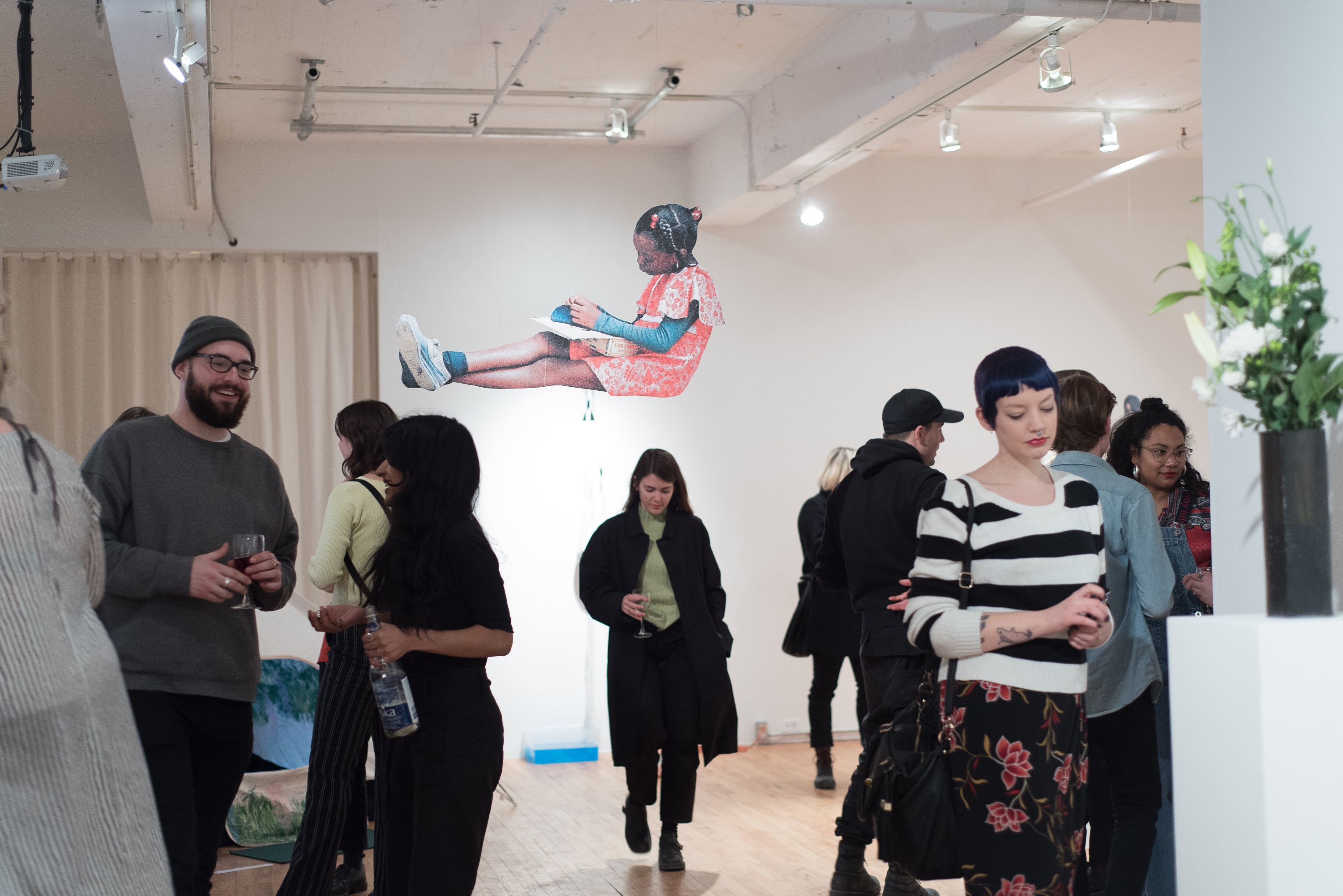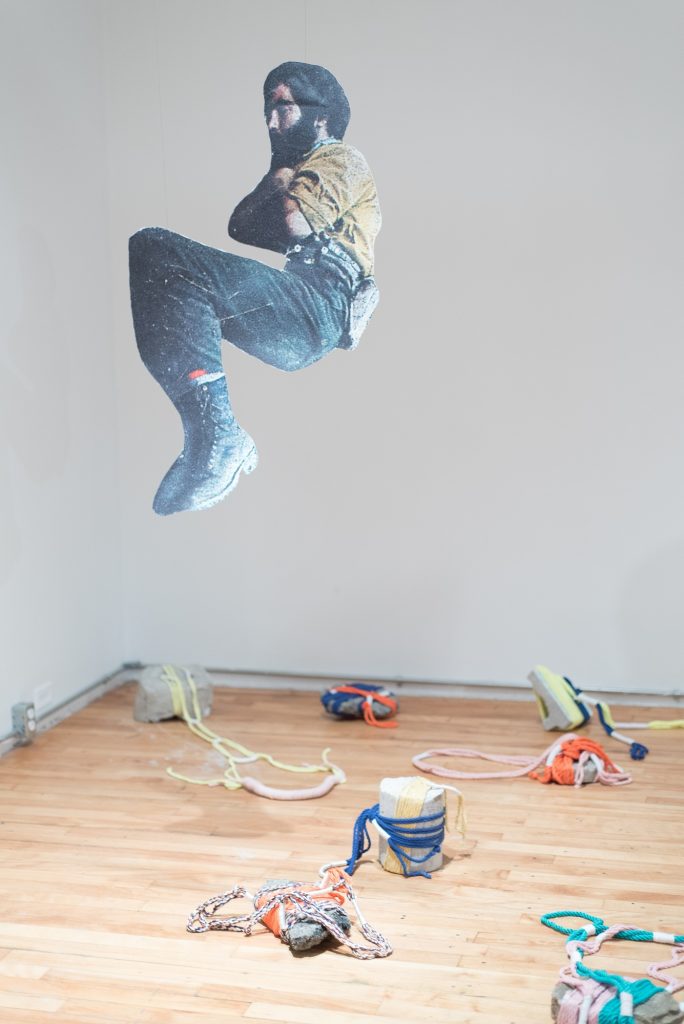Area Codes art exhibition addresses multiculturalism, marginality, and identity
Right to Campus McGill hosted an intersectional feminist art exhibition at Studio XX on March 23. Area Codes was curated by Concordia students Madelyne Beckles and Leah Schulli.
The exhibition featured the work of Concordia and McGill students, as well as other up-and-coming artists. The contributors shared their personal experiences of marginality and social oppression, and boldly confronted the issues from a female-identifying perspective. Area Codes aimed to raise awareness about these emerging artists’ work, but also to publicly recognize International Women’s Day, Anti-Street Harassment Week and the Commission on the Status of Women, a UN intergovernmental body dedicated to empowering women and promoting gender equality.
Right to Campus McGill is a student-run organization that aims to promote social equality and facilitate the right to public space on the McGill campus. The organization is part of an initiative taken by Women in Cities International, a Montreal-based non-profit association that focuses on “the empowerment, safety and inclusion of women and girls in urban settings,” according to Right to Campus McGill’s Facebook page. Right to Campus McGill organizes a variety of events with this goal in mind, including documentary screenings, art exhibitions, discussions and panels. The curators collaborated with Women in Cities International for this exhibition.
The Area Codes exhibition featured 12 installations, one of which was a performance piece by Anika Ahuja. During her performance, which lasted about five minutes, everyone in the gallery gathered around the artist and watched attentively. It blended well with the other pieces, but also added another layer of intrigue and engagement with the audience.
The artist sat cross-legged in one corner of the room with a bowl of red dye, a bowl of water, a scrub brush and a towel. Ahuja applied the dye to the palms of her hands and the tips of her fingers. She repeated this motion a number of times before washing her hands, scrubbing the dye off and then beginning to apply the dye again.
According to the artist’s statement, the performance, titled In Attempt to be Definitive, “addresses the conflict of the intangible cross-cultural space, and considers ideas of inherent versus chosen identity, denial and shame.” It is described as a representation of the artist’s attempt to take ownership of her various cultural identities that conflict with one another. By repeatedly dying and washing her hands, Ahuja seemed to be torn between accepting and ridding herself of any cultural significance that could be attached to her identity.
Janina Anderson, a teaching assistant who works in the Fine Arts Department at Concordia, contributed her piece titled Cut Outs. The piece consisted of two large collage pieces that were mounted on Bristol board and hung from the ceiling of the studio. The collages commanded the attention of gallery viewers due to their size and conspicuous placement—they hung just above the heads of the crowd. One piece featured a photo of a young African-American girl sitting with what seemed to be an open box in her lap. The other collage piece displayed a photo of an African-American man loosely floating in the fetal position with his arms tucked into his chest. The photos were taken from National Geographic magazines published in the mid-20th century. The artist explained that, by removing the surrounding environment from the photos, in other words, decontextualizing them, she wanted to highlight the “social, political and cultural values through which they are constructed and disseminated.” Her work provokes questions surrounding identity and multiculturalism through the medium of collage.
Liz Xu’s interactive piece was simply a tent emoji. Xu constructed a small tent out of synthetic material, and screen-printed grass, flowers, trees and mountains onto the inside of it. From the outside it appears to be a plain white tent, but upon entering, the viewer is encircled by mountains and a forest lit up by a lamp in the centre of the tent. In her artist statement, Xu explained that her piece “functions as a physical representation of the boundary between human and nature.” Though humans may attempt to break this boundary by immersing themselves in nature through activities like camping, the materials and supplies needed to do so are man-made and therefore maintain the division between man and nature. Xu’s piece may also be interpreted as a broader comment on Western society—the modern consumer and its relationship to the natural world—by presenting a blatant example of a man-made object combined with forms of the natural world. While sitting inside the tent, one feels relatively isolated from the everything outside the tent, which enforces a feeling of separation between oneself and the outdoors.
The exhibition also included the works of Sophia Borowska, Simone Blain, Molly Caldwell, Sara Graorac, Salina Ladha, Lindsey Lagemaat, Alicia Mersy, Hayley O’Byrne and Amery Sandford. Pieces ranged from sculptures and oil paintings to digital art and posters.





